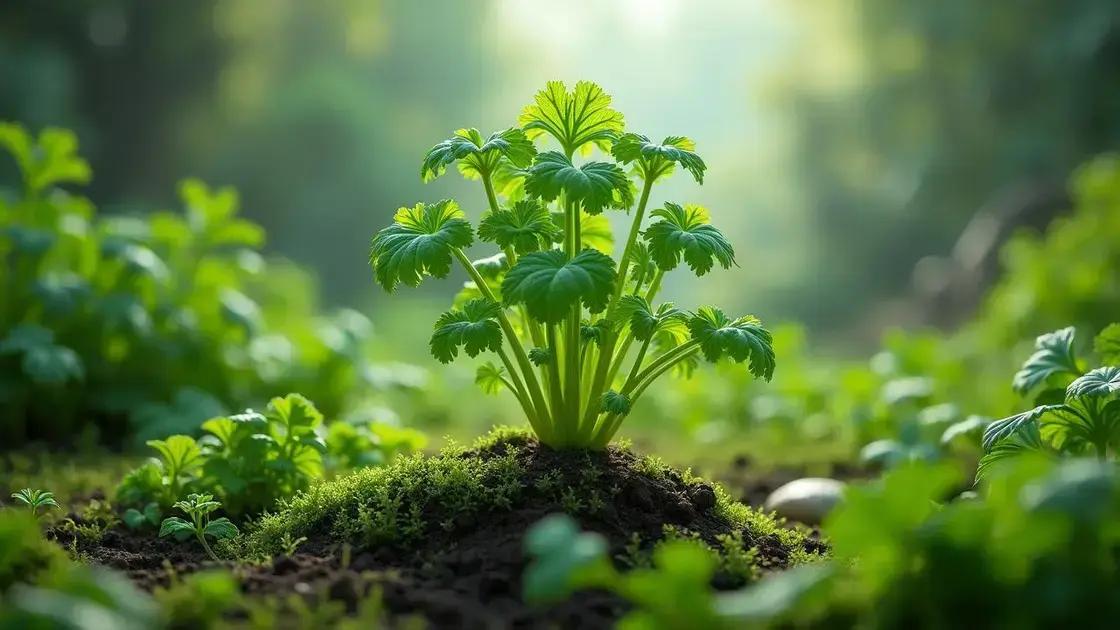How to Take Care of a Cilantro Plant: 5 Essential Tips for Success
How to take care of a cilantro plant is an essential skill for culinary enthusiasts. Growing cilantro not only enhances your dishes but also brings vibrant greenery to your home. Whether you are a seasoned gardener or just starting, understanding some key pointers can elevate your cilantro game. Let’s explore how to nurture your cilantro plants for the best flavor and freshness.
Table of Contents
ToggleWatering requirements for healthy cilantro growth
Watering requirements for healthy cilantro growth are crucial for ensuring your cilantro plants thrive and produce flavorful leaves. Understanding the right watering techniques can significantly enhance your gardening success.
Here are the essential watering guidelines you should follow:
- Water frequently but avoid overwatering. Cilantro prefers moist soil but can rot if left in standing water.
- Check the top inch of the soil. If it feels dry, it’s time to water.
- Use a watering can with a spout to deliver water directly at the base of the plant, preventing the leaves from becoming wet.
- Water in the morning to reduce evaporation rates and allow the plant to absorb moisture throughout the day.
Tips for optimal watering
- Keep an eye on the temperature; cilantro may need more water during hot spells.
- Adjust your watering frequency based on the growth stage—young cilantro seedlings require lighter watering compared to mature plants.
- Consider using a moisture meter to ensure you’re not over or under-watering your cilantro. This can be particularly helpful for indoor growing conditions.
By maintaining a consistent watering schedule, you improve the overall health of your cilantro and enable it to flourish in your garden. Remember, it’s often beneficial to adhere to exploring indoor gardening techniques to create an ideal environment for your herbs.
Frequently asked questions about cilantro watering
How often should I water cilantro?
Water your cilantro every 2-3 days, but adjust based on factors like temperature and humidity.
Can cilantro survive dry conditions?
Cilantro does not thrive in dry conditions; ensure the soil remains moist but not soggy.
What happens if I overwater cilantro?
Overwatering can lead to root rot, which significantly damages the plant.
Sunlight needs for thriving cilantro plants

Sunlight needs for thriving cilantro plants are essential to ensure robust growth and flavorful leaves. Understanding how much light your cilantro requires can significantly impact its health and yield.
Here are the key factors to consider when providing sunlight for your cilantro:
- Cilantro thrives best in full sun, meaning it requires about 6-8 hours of direct sunlight each day.
- In extremely hot climates, it’s beneficial to provide a bit of afternoon shade to prevent the plants from bolting.
- When grown indoors, place cilantro near a south-facing window to maximize exposure to natural light.
- Consider rotating your pot every few days to ensure all sides of the plant receive equal sunlight.
Optimal lighting conditions for cilantro
- Use grow lights if natural light is limited, especially during winter months, as they can mimic the sunlight cilantro needs.
- Avoid prolonged periods of darkness since cilantro plants may become leggy and weak without adequate light.
- Regularly monitor your plants for signs of stress due to insufficient light, such as pale leaves or slow growth.
By understanding the sunlight needs for thriving cilantro plants, you can create a perfect environment for these herbs to flourish. Don’t forget to explore exploring indoor gardening techniques to enhance your growing experience.
Common questions about cilantro’s light requirements
How much sunlight does cilantro need?
Cilantro requires 6-8 hours of direct sunlight daily for optimal growth.
Can cilantro grow in partial shade?
While cilantro can survive in partial shade, it grows best in full sunlight conditions.
What are signs of inadequate light for cilantro?
Pale leaves, weak stems, and slow growth indicate your cilantro may not be getting enough light.
Soil selection and care for cilantro health
Soil selection and care for cilantro health are vital for growing robust cilantro plants. The type of soil you use can greatly influence the overall growth and health of your cilantro.
Here are some important factors to consider when choosing soil for cilantro:
- Cilantro thrives in well-draining soil. Aim for a soil mix that maintains moisture without becoming soggy.
- Consider using a potting mix specifically designed for herbs, as these often have the right balance of nutrients and drainage.
- The ideal pH level for cilantro is between 6.2 and 6.8, which you can easily test with a basic soil pH kit.
- Incorporate organic matter such as compost to enhance soil structure and fertility, promoting better cilantro growth.
Steps for maintaining healthy soil
- Regularly check for soil moisture by sticking your finger into the soil; it should feel damp but not overly wet.
- Avoid compacting the soil around the roots; this can inhibit drainage and gas exchange.
- Periodically refresh the soil with organic fertilizers to provide essential nutrients.
By prioritizing the right soil selection and care for your cilantro, you can ensure your plants thrive and remain healthy throughout their growth cycle. For more tips on cultivating a vibrant herb garden, consider exploring indoor gardening techniques.
Frequently asked questions about cilantro soil care
What type of soil is best for cilantro?
A well-draining potting mix with organic matter is ideal for cilantro.
How often should I fertilize cilantro?
Apply organic fertilizers every 4-6 weeks to support healthy growth.
What pH level is best for cilantro growth?
The optimal pH level for cilantro is between 6.2 and 6.8.
In conclusion
Caring for cilantro plants requires attention to several key factors, including watering, sunlight, and soil selection. By providing the right conditions for your cilantro, you can enjoy healthy, vibrant plants that enhance your culinary dishes. Remember, growing cilantro can be a rewarding experience, whether indoors or outdoors. For more detailed guidance, be sure to check out these tips on enhancing your indoor garden.

